You might be surprised to learn that some private jets can fly faster than commercial airliners, with cruise speeds reaching up to 700 knots (1,300 km/h). But what sets these high-performance aircraft apart from others in their class? Is it the type of engine, the aerodynamic design, or something else entirely? As you consider the benefits of private air travel, understanding the factors that impact speed can help you make informed decisions. But just how fast can these jets go, and what are the implications for your travel plans?
Speeds of Private Jets Compared
When shopping for a private jet, you'll often find yourself comparing speeds to determine which aircraft best suits your needs.
Speed is a critical factor, as it directly impacts travel time and total efficiency. You'll want to ponder the type of flying you'll be doing most often – short hops or long-haul flights – to determine the ideal speed for your needs.
Private jets can cruise at speeds ranging from around 400 to over 700 knots (740-1,300 km/h). Light jets, like the Cessna Citation Mustang, typically cruise at lower speeds, around 400-450 knots (740-830 km/h).
Midsize jets, such as the Hawker 900XP, can reach speeds of up to 550 knots (1,020 km/h). Large jets, like the Gulfstream G650ER, can cruise at speeds over 650 knots (1,200 km/h).
When evaluating speeds, also ponder factors like range, fuel efficiency, and cabin comfort to guarantee you find the perfect balance for your private flying needs. By weighing these factors, you'll be able to make an informed decision and find the ideal private jet for your unique requirements.
Fastest Private Jets in Service
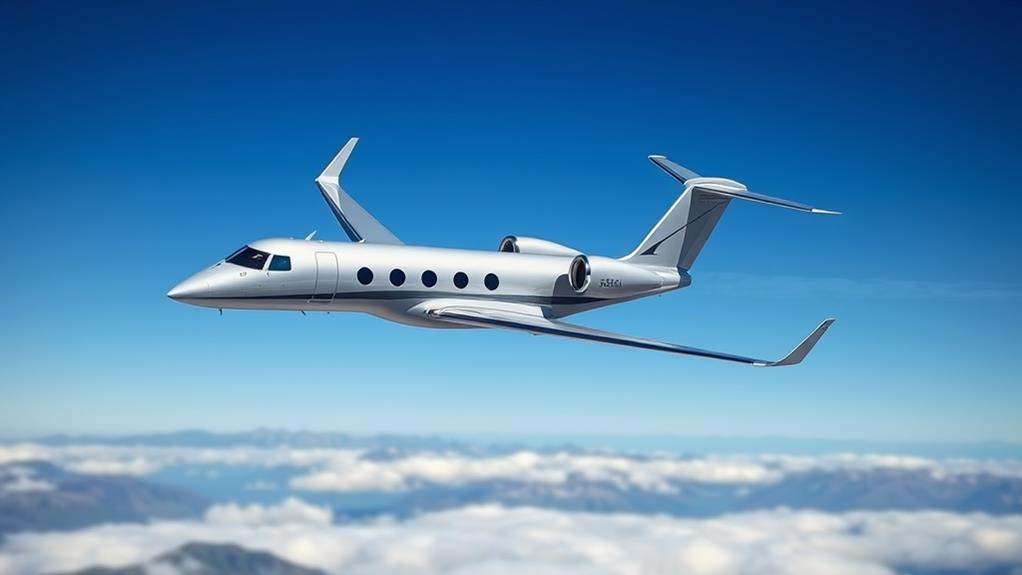
Speed is the ultimate luxury in private aviation, and for those who demand the fastest travel times, there are several private jets that deliver unparalleled performance.
You'll be thrilled to know that these jets can reach speeds of over 500 knots (926 km/h), making them some of the fastest civilian aircraft in the world. The Gulfstream G650ER, for instance, can cruise at an impressive 516 knots (955 km/h), while the Bombardier Global 7500 can reach speeds of up to 528 knots (979 km/h).
The Cessna Citation X+, another speed demon, can fly at an astonishing 700 mph (1,127 km/h), making it one of the fastest private jets in service.
The Embraer Phenom 300, meanwhile, can reach speeds of up to 453 knots (839 km/h), making it an excellent choice for those who value speed and agility.
These jets aren't only fast but also offer unparalleled comfort and luxury, making them the ultimate mode of transportation for the discerning traveler.
Whether you're a business executive or a luxury traveler, these private jets will get you to your destination in style and record time.
Types of Private Jet Engines
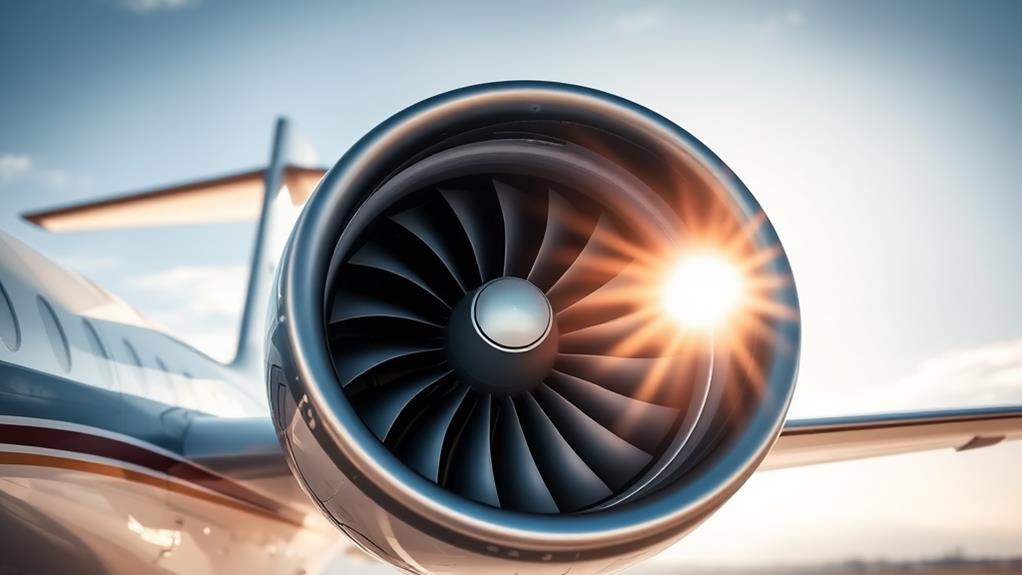
Most private jets rely on one of two primary types of engines: turbofans or turboprops.
Turbofans are the most common type, used in over 75% of private jets. They work by using a turbine to drive a fan, which accelerates a large mass of air rearward, producing a significant amount of thrust.
These engines are known for their high bypass ratio, which means they use a significant portion of their airflow to generate thrust, rather than just hot gases. Turbofans are fast and efficient, making them ideal for long-range flights.
On the other hand, turboprops use a turbine to drive a propeller, which generates thrust by pushing air rearward.
These engines are often used in smaller private jets and are known for their efficiency at lower speeds. They're also more fuel-efficient, making them a great option for shorter flights.
When you're flying on a turboprop-powered private jet, you'll notice the distinctive sound of the propeller spinning.
Both types of engines offer unique benefits, and the right choice for you'll depend on your specific needs and preferences.
Factors Affecting Private Jet Speed
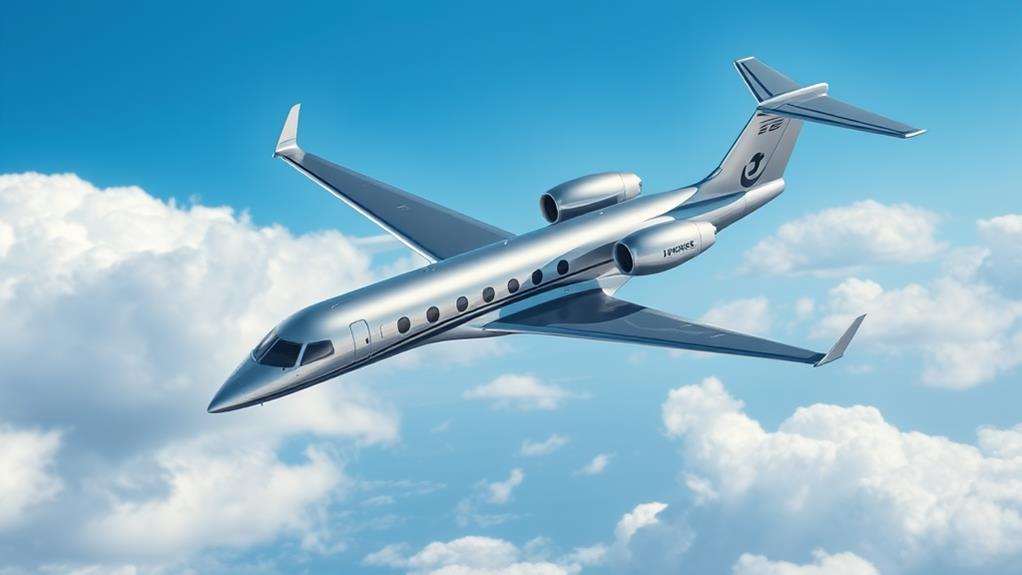
The type of engine powering your private jet is just one factor that affects its speed.
You might think that's the only thing that matters, but think again! When you're soaring through the skies, several factors come into play to determine just how fast you'll get to your destination.
Four key factors that impact your private jet's speed:
1. Engine type and power: As mentioned, the engine is a vital factor, but it's not the only one.
The type of engine and its power output will substantially impact your jet's speed.
2. Aerodynamic design: The shape and design of your private jet will also play a role in its speed.
A sleek, streamlined design will help reduce air resistance, allowing you to fly faster.
3. Weight and payload: The heavier your jet, the slower it will go.
This is because more energy is required to propel a heavier aircraft through the air.
4. Altitude and air conditions: Flying at higher altitudes can result in faster speeds due to thinner air, but weather conditions like headwinds or turbulence can slow you down.
Private Jet Speed Records Broken
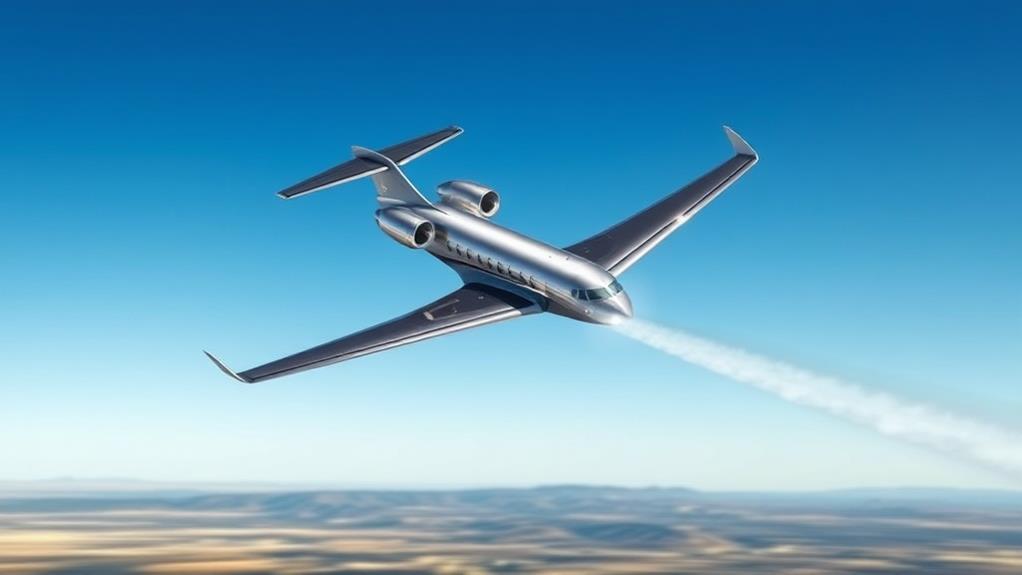
Flying at incredible velocities, private jets have consistently pushed the boundaries of what's possible in aviation.
You've probably heard of the iconic Lockheed SR-71 Blackbird, a supersonic jet that can reach speeds of over Mach 3.5.
But did you know that private jets have also broken numerous speed records? The Cessna Citation X+, for instance, holds the record for the fastest civilian aircraft, reaching a top speed of 717 mph.
The Gulfstream G650ER, another high-performance private jet, has also set multiple speed records, including a transatlantic flight from New York to London in just 5 hours and 57 minutes.
These record-breaking flights demonstrate the incredible capabilities of private jets.
With advanced aerodynamics and powerful engines, these aircraft can reach speeds that were previously unimaginable.
As you navigate the world of private aviation, you'll uncover that speed is just one of the many benefits of flying private.
Whether you're a business executive or a thrill-seeker, private jets offer an unparalleled level of performance and luxury.
Top Speeds of Light Jets
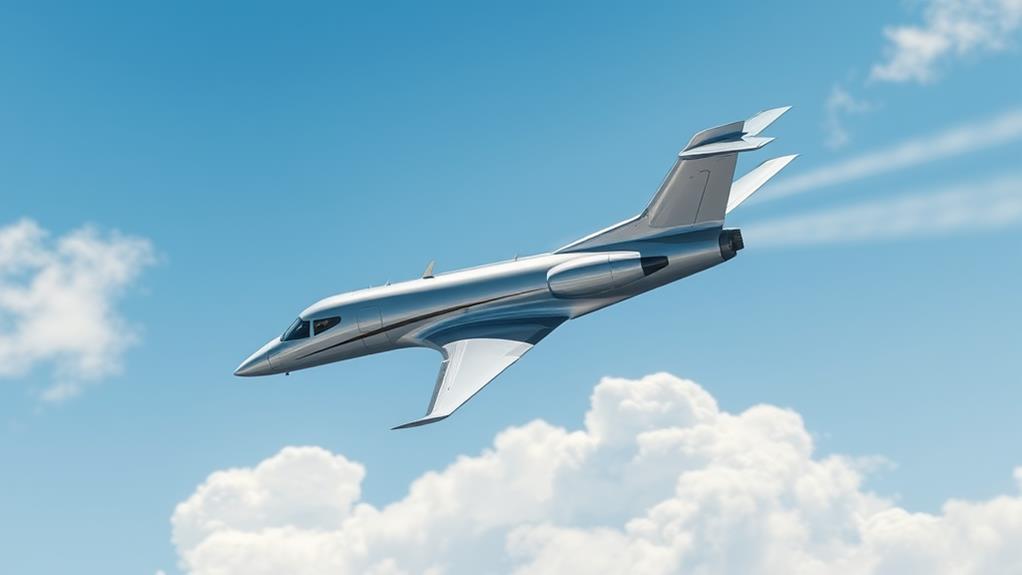
Among the light jet fleet, several models stand out for their exceptional speed and agility.
As you venture into the world of private aviation, you'll unearth that these jets are designed to deliver exceptional performance, comfort, and style.
In terms of speed, some light jets truly stand out from the crowd.
- Cessna Citation M2: With a top speed of 416 knots (770 km/h), this jet is perfect for short to medium-range flights.
- Phenom 300: This popular light jet has a top speed of 453 knots (838 km/h), making it an excellent choice for business or leisure travel.
- Hawker 400XP: With a top speed of 446 knots (826 km/h), this jet offers a great balance of speed, comfort, and range.
- Learjet 75: This sleek jet has a top speed of 464 knots (859 km/h), making it one of the fastest light jets on the market.
These jets are designed to deliver exceptional performance, and their top speeds are just one aspect of their impressive capabilities.
Whether you're a seasoned traveler or a private aviation enthusiast, these light jets are sure to impress.
Midsize Private Jet Performance
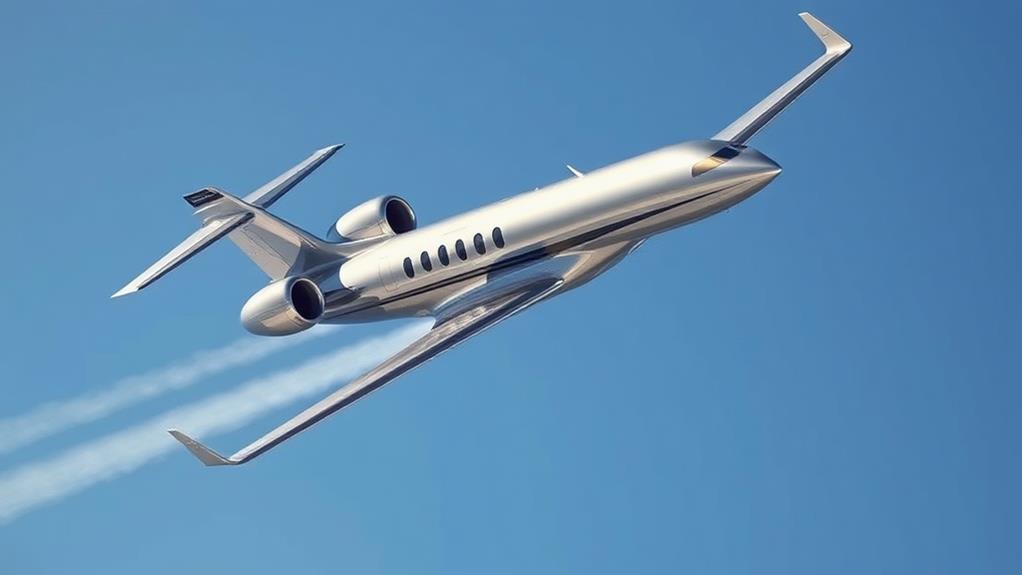
Several midsize private jets boast impressive performance capabilities, making them a popular choice for those seeking a balance of speed, comfort, and range.
You'll find that these jets typically cruise at speeds between 400 and 500 knots (740-926 km/h), with some models reaching up to 530 knots (981 km/h). The Cessna Citation X+, for example, has a top speed of 528 knots (978 km/h), making it one of the fastest midsize jets on the market.
When it comes to range, midsize private jets can fly non-stop for around 2,000-3,000 nautical miles (3,704-5,556 km), depending on the specific model and configuration.
This means you can easily fly from New York to Los Angeles or from London to Moscow without needing to refuel. With their impressive performance capabilities and comfortable cabins, midsize private jets are an excellent choice for business travelers and individuals who value flexibility and convenience.
Whether you're flying for business or pleasure, these jets offer an exceptional travel experience that's hard to match.
Large Private Jet Cruising Speeds
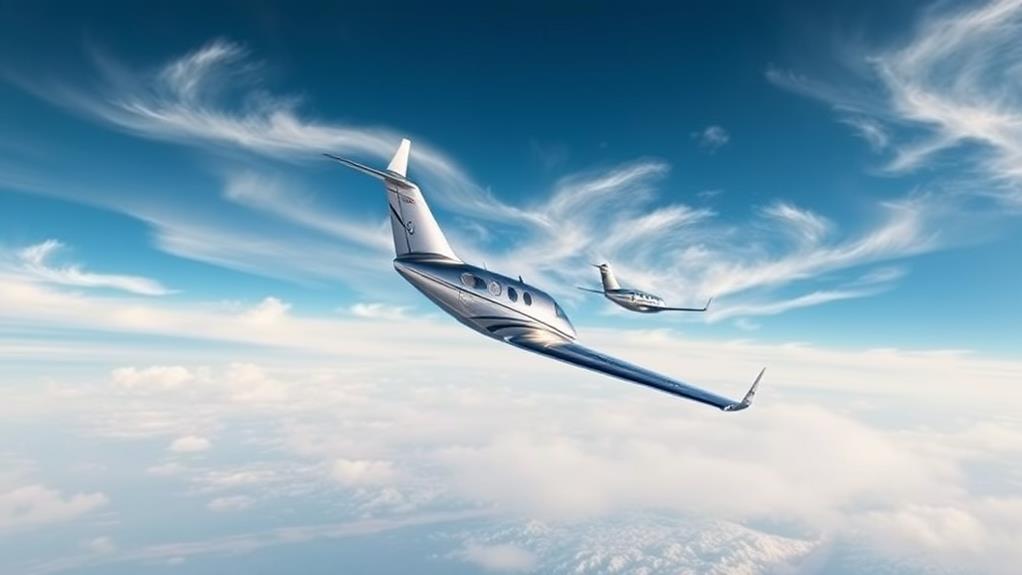
As you step up to large private jets, you can expect even more impressive performance capabilities.
These jets are designed for luxury and speed, making them perfect for those who want to travel in style. With a larger cabin and more powerful engines, you can expect cruising speeds of over 450 knots (518 mph).
Furthermore, making profits on the go has become more accessible, with online systems like CR VIP offering consistent income streams that require minimal daily effort. For those seeking to monetize their time more effectively, investing in a luxury travel experience mightn't be the only means of reaping substantial benefits.
Some notable examples of large private jets and their cruising speeds include:
- Gulfstream G450: 450 knots (518 mph) – A popular choice among business travelers, this jet offers a spacious cabin and excellent range.
- Bombardier Challenger 604: 459 knots (528 mph) – With a large cabin and plenty of amenities, this jet is perfect for those who want to travel in comfort.
- Dassault Falcon 900: 462 knots (533 mph) – Known for its exceptional performance and comfort, this jet is a favorite among luxury travelers.
- Cessna Citation X: 473 knots (545 mph) – With a top speed of over 700 mph, this jet is perfect for those who want to travel quickly and efficiently.
Whether you're traveling for business or pleasure, a large private jet is sure to impress.
With its luxurious amenities and exceptional performance, it's the perfect way to travel in style
Long Range Private Jet Capabilities

Typically, when you're considering a private jet for long-range travel, you want to know it can handle the distance without sacrificing comfort or performance.
Long-range private jets are designed to take you on extended voyages, often spanning thousands of miles, while maintaining a high level of luxury and efficiency.
These aircraft are equipped with advanced avionics, powerful engines, and spacious cabins, ensuring a smooth ride and ample amenities.
For instance, the Gulfstream G650ER, a popular long-range private jet, boasts a range of over 7,500 nautical miles, allowing you to fly non-stop from New York to Dubai or Los Angeles to London.
Its cabin is designed to accommodate up to 19 passengers, featuring large windows, comfortable seating, and gourmet catering.
In the same vein, the Bombardier Global 7500 offers a range of 7,700 nautical miles, with a cabin that can accommodate up to 17 passengers, complete with a full galley, entertainment system, and even a dedicated crew rest area.
With these capabilities, you can travel the world in style and comfort, without worrying about the distance.
How Private Jets Save Time
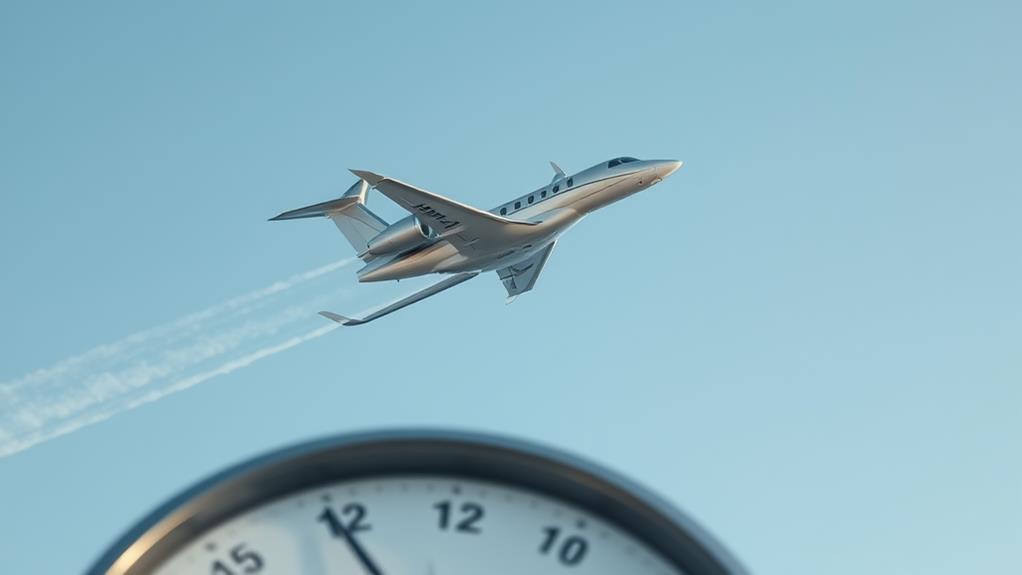
Flying on a private jet saves you time in more ways than one.
When you fly commercial, you're at the mercy of the airline's schedule, which can be inconvenient and inflexible. With a private jet, you create your own schedule, allowing you to arrive at your destination at the exact time you need to.
This flexibility is invaluable for business travelers, who often have tight meeting schedules and can't afford to waste time waiting for a commercial flight. Additionally, with the flexibility that a private jet provides, you can allocate the saved time to more crucial aspects, such as creating an automatic income stream that pays on a regular basis.
Many successful individuals, who are also using the 3 Step Method, rely on this extra time to invest in personal and professional growth.
- No security lines: With a private jet, you skip the long security lines and tedious screening process, getting you to your destination faster.
- Direct flights: Private jets can often fly directly to your destination, eliminating the need for layovers and connections.
- Flexible scheduling: Create your own schedule and fly at a time that suits you, not the airline.
- Less waiting time: With a private jet, you can arrive at the airport just minutes before departure, rather than hours in advance
Frequently Asked Questions
Can Private Jets Fly Through Severe Weather Conditions?
You're wondering if private jets can handle severe weather. Generally, they can fly through light to moderate weather conditions, but pilots will often reroute or delay flights to avoid severe weather for safety reasons.
How High Do Private Jets Typically Cruise?
You're wondering how high private jets typically cruise. Generally, they fly between 41,000 and 45,000 feet, but some can reach altitudes of up to 51,000 feet, depending on the aircraft type and weather conditions.
Are Private Jets More Fuel-Efficient Than Commercial Planes?
You're probably pondering the performance of private planes versus commercial airliners. Typically, private jets aren't more fuel-efficient than commercial planes, as they often prioritize speed and luxury over economy, resulting in higher fuel consumption.
Can Private Jets Land on Short Runways?
You're wondering if private jets can land on short runways. Yes, many private jets are designed to land on shorter runways, typically 3,000-4,000 feet long, due to their lighter weight and more efficient engines.
Do Private Jets Require Special Pilot Training?
You're wondering if private jets require special pilot training. Yes, they do! You'll need a type rating for the specific aircraft, plus recurrent training to stay certified. It's a rigorous process, but you'll be flying high in no time!
Conclusion
As you delve into the world of private jets, bear in mind that speed is just one aspect of the luxury experience. But what's truly remarkable is that some private jets can fly faster than commercial airliners, with the Cessna Citation X+ reaching speeds of up to 700 mph! That's like traveling from New York to Los Angeles in just 4 hours, giving you more time to enjoy the finer things in life. The possibilities are endless, and the speed is just the beginning.